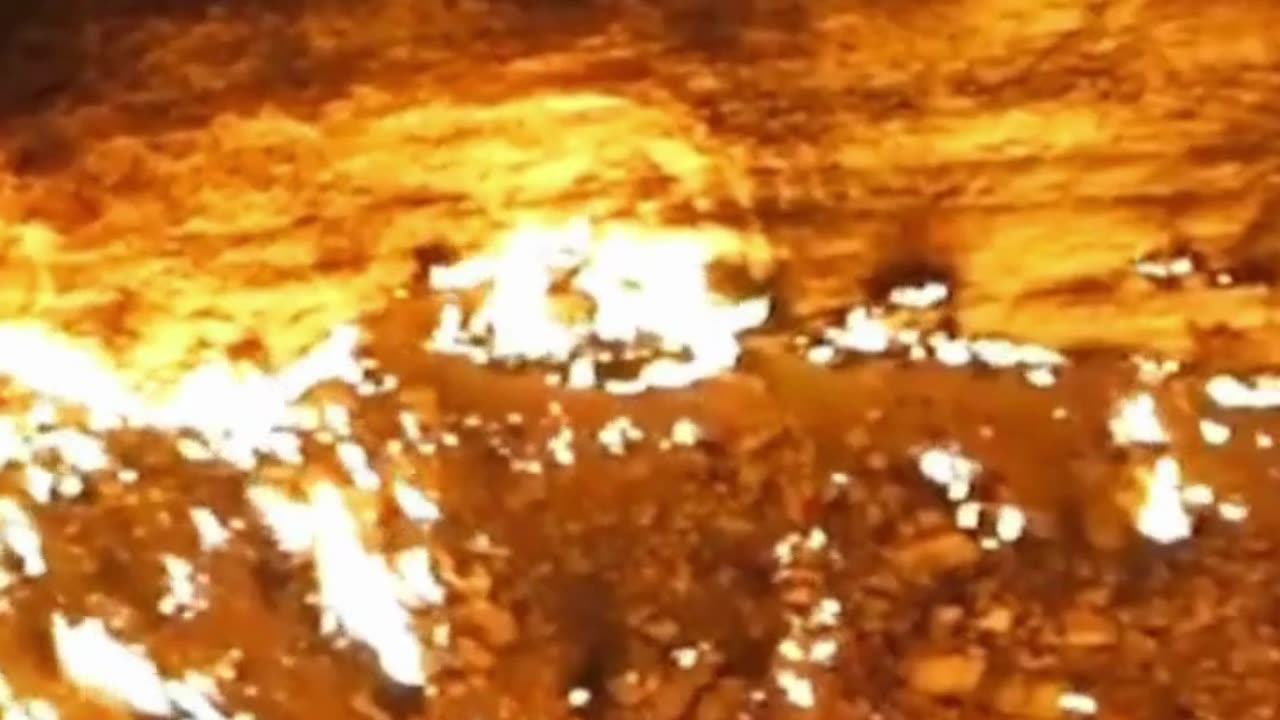Premium Only Content

The Darvaza Gas Crater: A Glimpse into the Inferno
The Darvaza Gas Crater, often referred to as the "Door to Hell" or "Gates of Hell," is a natural gas crater located in the Karakum Desert of Turkmenistan. It's a unique and striking geological feature that has gained global attention due to its fiery appearance and mysterious origin.
Here are some key details about the Darvaza Gas Crater:
Origin and Formation: The crater is the result of a drilling mishap that occurred in 1971. Soviet geologists were drilling for natural gas in the area when the ground collapsed, creating a large sinkhole. Fearing the release of toxic gases, they decided to ignite the gas in the crater, expecting it to burn off in a few weeks. However, the gas has been burning continuously ever since, leading to the crater's fiery appearance.
Size and Depth: The Darvaza Gas Crater has a diameter of around 69 to 98 meters (226 to 322 feet) and a depth of approximately 30 meters (98 feet). The walls of the crater are steep and composed of compacted sand and clay.
Burning Gas: The crater is filled with burning natural gas that produces a continuous flame, often reaching up to several meters in height. The flames are visible both during the day and at night, creating a surreal and mesmerizing spectacle.
Tourist Attraction: Over the years, the Darvaza Gas Crater has become a popular tourist destination, drawing visitors from around the world who come to witness the unique and otherworldly sight. The crater's remote location in the desert adds to its allure.
Scientific Interest: While the crater's accidental creation and long-lasting gas burn have made it famous, it has also attracted scientific interest. Researchers study the crater to better understand the geological processes involved and to gain insights into the behaviour of underground natural gas reservoirs.
Environmental Concerns: The continuous burning of natural gas at the crater contributes to greenhouse gas emissions, primarily in the form of carbon dioxide and methane. This raises environmental concerns, as these gases are potent contributors to climate change. There have been discussions about extinguishing the fire to mitigate its environmental impact, but it have been unsuccessful so far.
Overall, the Darvaza Gas Crater is a captivating and intriguing natural phenomenon that combines both scientific and cultural significance.
-
 1:05:24
1:05:24
BonginoReport
3 hours agoTrump Protects Old Glory in New EO! - Nightly Scroll w/ Hayley Caronia (Ep.119) - 08/25/2025
59.2K32 -
 LIVE
LIVE
The Jimmy Dore Show
2 hours agoSnoop Dogg Is DONE w/ LBGTQ+ Propaganda In Kids Movies! Trump Outlaws Burning the U.S. Flag!
8,044 watching -
 LIVE
LIVE
Quite Frankly
5 hours ago"Weekend News, All-Time Physical Feats, Mixed Reels" 8/25/25
465 watching -
 LIVE
LIVE
The Mike Schwartz Show
2 hours agoTHE MIKE SCHWARTZ SHOW Evening Edition 08-25-2025
4,159 watching -
 1:43:44
1:43:44
MTNTOUGH Podcast w/ Dustin Diefenderfer
17 hours agoEddie Penney: DEVGRU to Single Dad of 3 Overnight | MTNPOD #130
4.36K1 -
 1:28:57
1:28:57
Kim Iversen
3 hours agoSomeone Stole Kim's Identity — And Bought a Car! | Dr Drew Pinsky On Sex, Drugs & Censorship
34.7K21 -
 1:07:00
1:07:00
TheCrucible
3 hours agoThe Extravaganza! Ep. 26 (with special guest host Rob Noerr) 8/25/25
65.1K6 -
 7:35
7:35
Tundra Tactical
2 hours ago $0.55 earnedI Can’t Believe I’m Saying This… 2011’s Are Actually COOL Now?! 🤯
10.7K1 -
 LIVE
LIVE
Wayne Allyn Root | WAR Zone
5 hours agoWAR Zone LIVE | 25 AUGUST 2025
103 watching -
 1:08:26
1:08:26
Outspoken with Dr. Naomi Wolf
4 hours ago"CPA/Whistleblower Sam Antar Identifies Millions in Fraud Behind Mamdani Campaign"
12K1